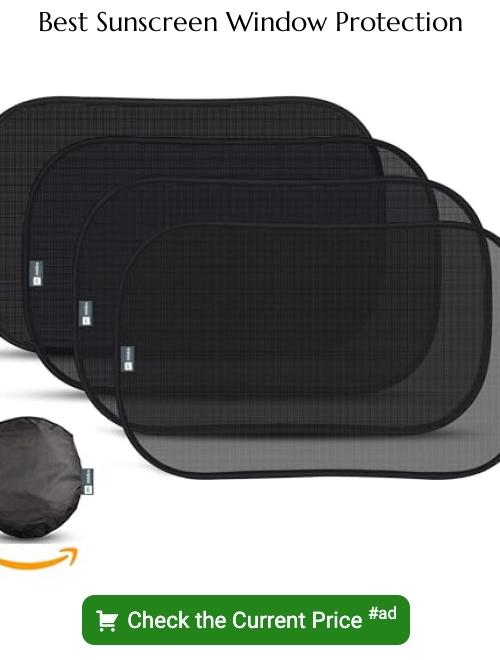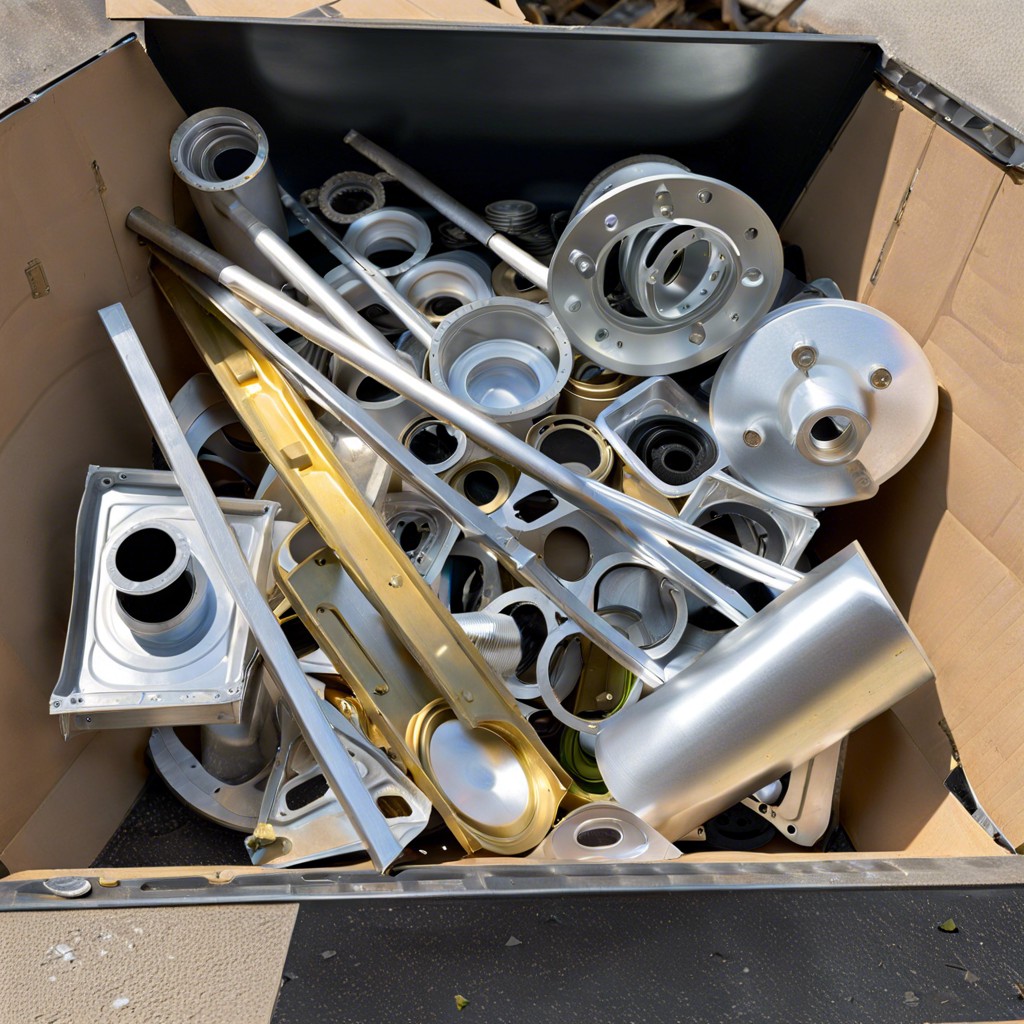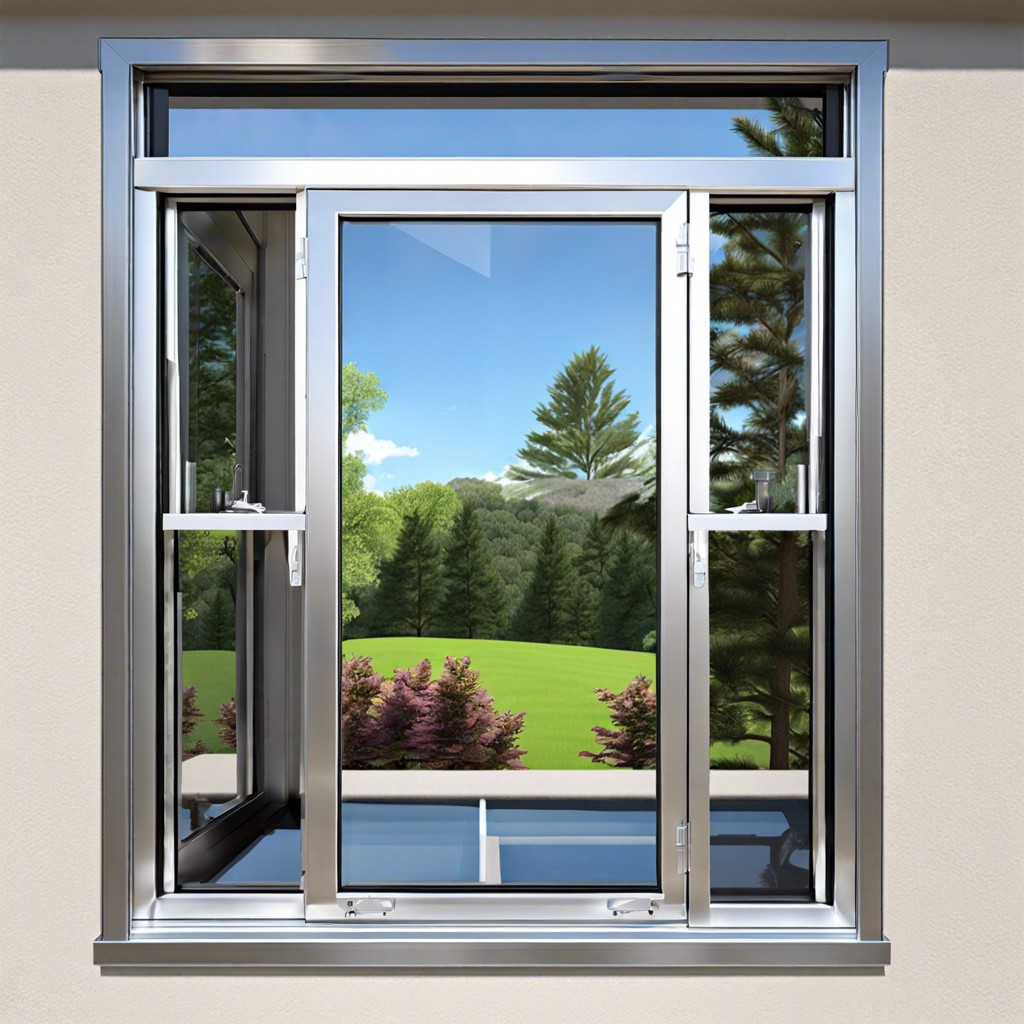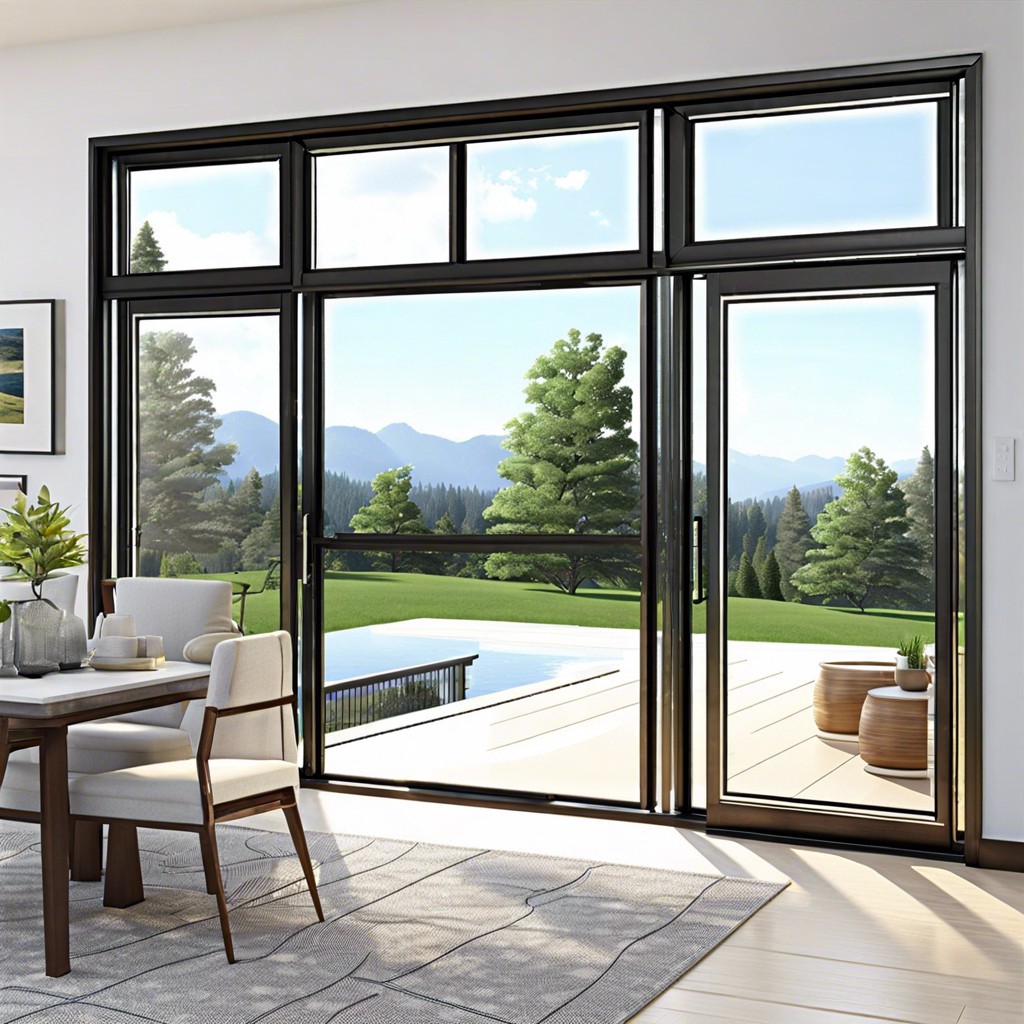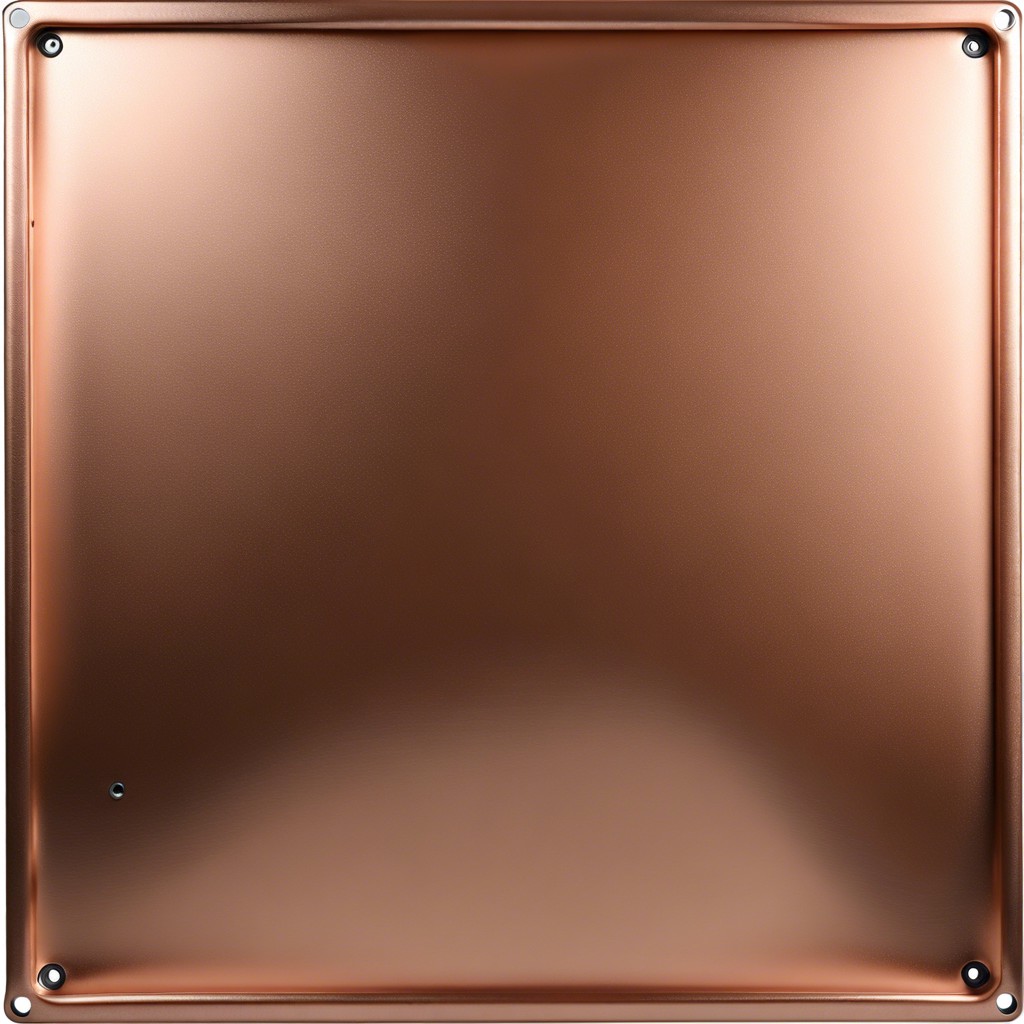Discover the truth behind tanning through a window as we unveil the science, myths, and facts in this enlightening blog post.
Have you ever wondered if you can get a tan while sitting by the window? It’s a common question that many people ask, especially during the winter months when outdoor tanning is not an option. Some say that they have gotten a tan just by sitting next to a window on a sunny day, while others argue that it’s impossible.
So, what’s the truth? In this blog post, we’ll dive into the science behind tanning and whether or not it’s possible to get your glow on through glass. Get ready to learn everything you need to know about tanning through windows!
Key takeaways:
- Tanning through a window is less effective than outdoor tanning.
- Windows block out some UV rays, reducing the tanning effect.
- UVA rays can still penetrate glass and cause skin damage.
- Different types of glass provide varying levels of UV protection.
- Window films and sunscreens can enhance UV protection indoors.
The Science Behind Tanning
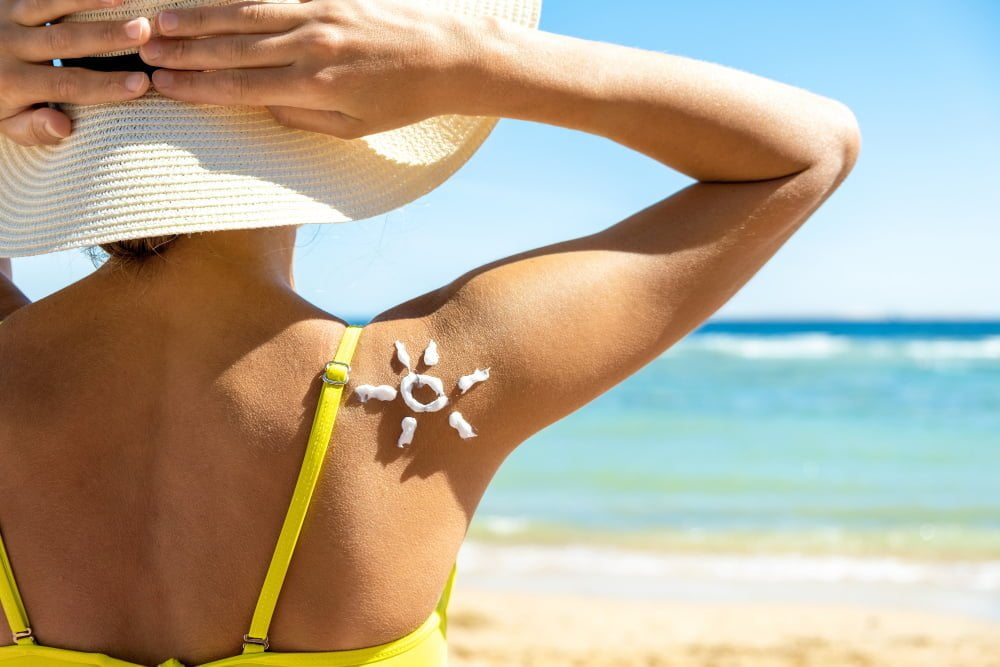
Tanning is a natural process that occurs when the skin is exposed to ultraviolet (UV) radiation from the sun. UV radiation triggers melanin production in the skin, which gives it a darker color and helps protect against further damage from UV rays.
However, not all types of UV rays are created equal.
There are two main types of UV radiation: UVA and UVB. UVA rays penetrate deep into the skin’s layers and can cause premature aging, while also contributing to some forms of skin cancer.
On the other hand, shorter-wavelength but more intense UVB rays primarily affect surface-level cells in your epidermis layer causing sunburns or tans.
When you’re outside on a sunny day without any protection like sunscreen or clothing covering your body parts exposed to sunlight for an extended period; both UVA & B radiations will reach your body directly through direct exposure with no barriers between them – this includes windows too!.
Types of UV Rays
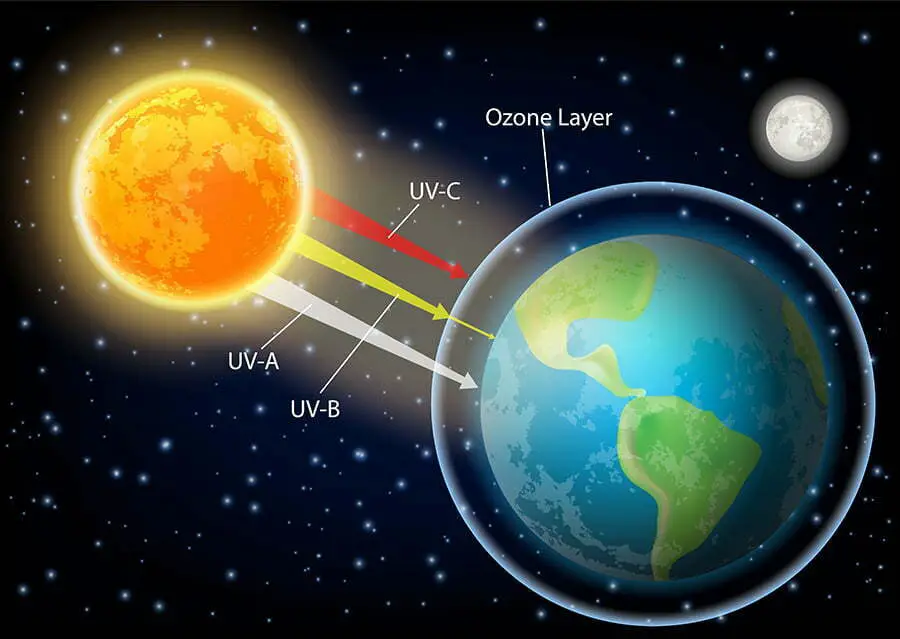
There are three types of UV rays: UVA, UVB, and UVC. The first two can penetrate the Earth’s atmosphere and reach our skin while the third is absorbed by ozone in the atmosphere before it reaches us.
UVA rays have longer wavelengths than UVB rays and can penetrate deeper into your skin. They’re responsible for causing premature aging signs like wrinkles, fine lines, age spots as well as contributing to some types of skin cancer.
UVB has shorter wavelengths than UVA but is more potent when it comes to causing sunburns on exposed areas such as face or arms. It also plays a significant role in developing different forms of skin cancers including basal cell carcinoma (the most common form), squamous cell carcinoma (second most common) & melanoma (most dangerous).
It’s important to note that both types play an equal part in tanning through windows since they both pass through glass with ease unless there’s proper protection installed on them.
UV Radiation Through Windows

There are two types of UV rays: UVA and UVB. While both types can cause skin damage, UVA rays penetrate deeper into the skin than UVB rays, making them more harmful in terms of premature aging and cancer risk.
When it comes to tanning through windows, it’s important to understand how much UV radiation actually penetrates glass. According to research studies conducted by dermatologists, most standard windows block out around 97% of all incoming UVB radiation but only about 37% of UVA radiation.
This means that while you may not get a sunburn or immediate redness from sitting next to a window on a sunny day, you could still be exposing your skin to significant amounts of damaging UVA rays which contribute significantly towards photoaging (premature ageing caused by exposure) as well as increasing your risk for developing certain types of cancers such as melanoma over time.
Glass Windows and UV Filtering
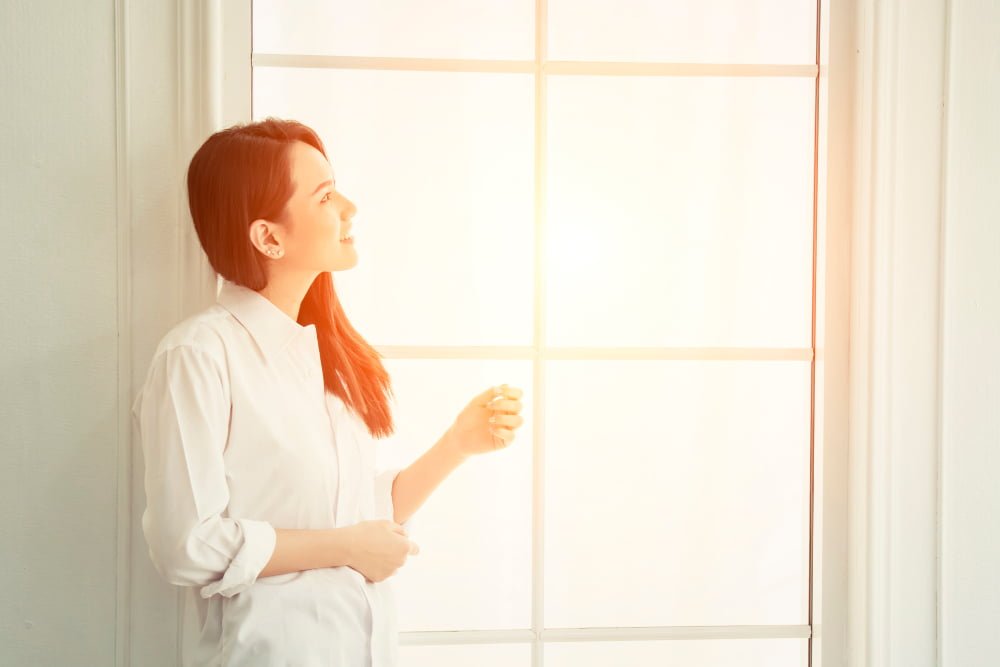
While regular glass can block some UVB rays, it does little to protect against UVA radiation that causes skin damage and aging. This means that even if you’re sitting by a window indoors, you could still be exposed to harmful UV rays.
However, there are ways to increase the level of protection provided by your windows. One option is installing special films or coatings on the glass surface designed specifically for blocking out harmful UVA and UVB radiation while allowing visible light transmission.
Another option is using low-E (low emissivity) coated windows which have an invisible metallic layer applied during manufacturing process that reflects heat back into your home while also reducing glare from sunlight without compromising natural light levels inside your home or office space.
It’s important to note though; these options may come at an additional cost compared with standard window panes.
Types of Glass and UV Penetration
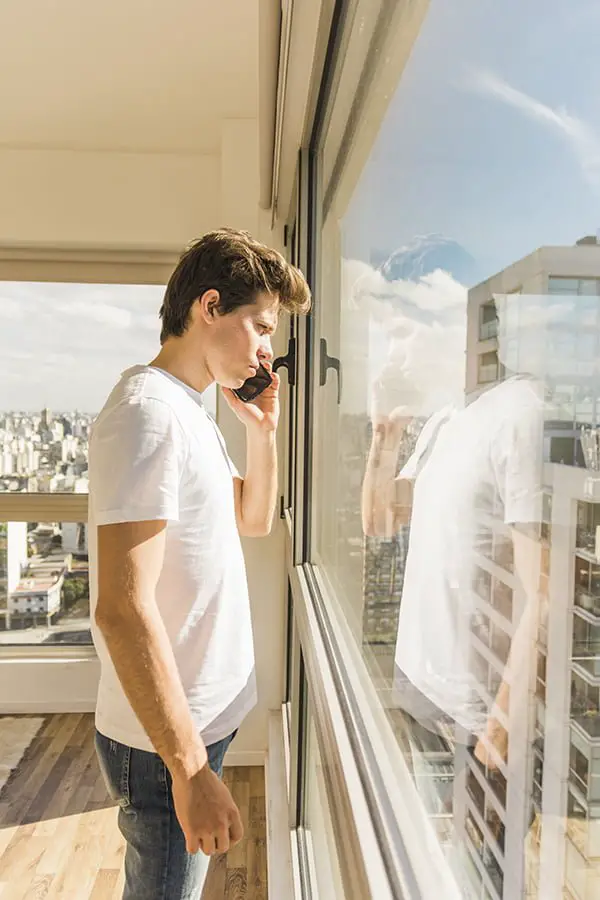
Some types of glass are designed to block UV radiation, while others allow more penetration. For example, standard window glass blocks most UVB rays but allows UVA rays to pass through.
However, there are other types of glasses that offer better protection against both UVA and UVB radiation. These include tempered and laminated glasses that have been treated with special coatings or films for added protection.
Tempered glass is heated and cooled rapidly during manufacturing which makes it stronger than regular window panes. It also has a higher resistance against shattering when broken compared to regular windows making them ideal for areas prone to natural disasters like hurricanes.
Laminated Glass on the other hand consists of two layers sandwiched together by an interlayer film which provides additional strength as well as sound insulation properties besides blocking harmful ultraviolet (UV) light from entering indoors.
Can You Get A Suntan Through A Window?
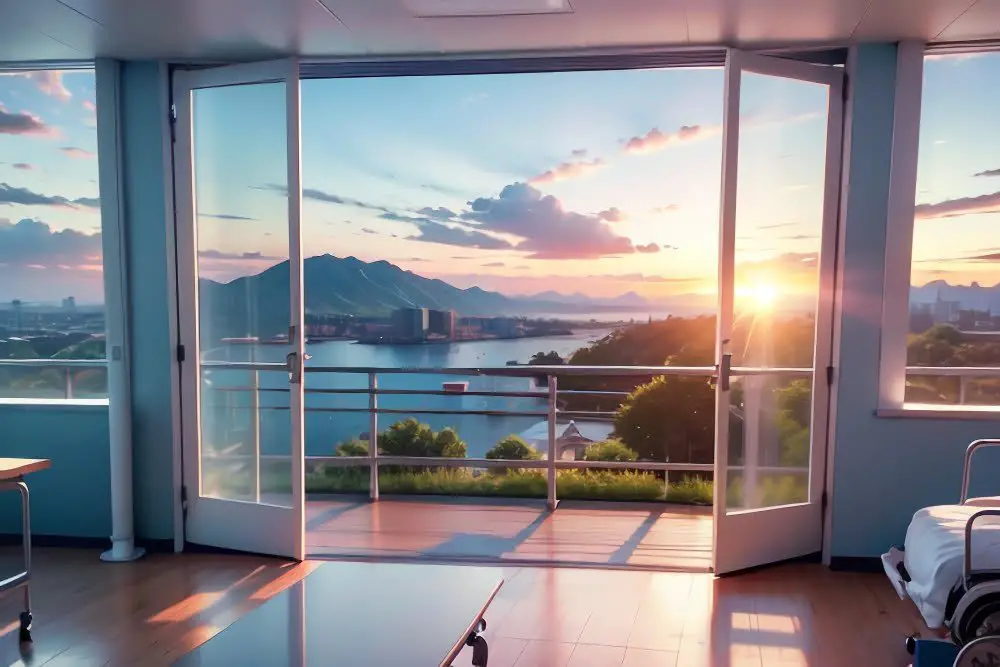
The type of window and its ability to filter UV radiation plays an important role in whether or not you’ll be able to tan indoors. In general, standard windows do not allow for much UV penetration and will block most of the rays responsible for tanning.
However, some types of glass are designed to let more light in while still filtering out harmful radiation.
It’s also worth noting that even if your skin does start to darken while sitting by a window, it doesn’t necessarily mean that you’re getting a true suntan. Some people may experience what’s known as “window burn,” which is essentially sunburn caused by exposure through glass rather than direct sunlight.
So can you get a suntan through a window? The answer isn’t straightforward since there are many factors at play here.
Can You Get Sunburned Through A Window?

However, this is not entirely true. While glass does block most UVB rays (the ones responsible for burning), UVA rays can still penetrate through windows and cause skin damage over time.
According to the Skin Cancer Foundation, UVA rays are present throughout the day and can pass through clouds and glass easily. This means that even if you’re sitting indoors by a window on an overcast day or in your car during your daily commute, you’re still at risk of exposure to harmful UV radiation.
It’s important to note that while getting sunburned from sitting next to a window may be unlikely unless exposed for extended periods under direct sunlight; however long-term exposure could lead to premature aging or skin cancer development.
Tanning Through Car Windows

However, this is not entirely true. While most types of glass do block some UV radiation, it’s important to note that not all windows are created equal.
Car windshields are made from laminated safety glass and typically block out almost all of the sun’s harmful UVA rays but only about 50% of its UVB rays. Side and rear windows on cars, however, are usually made from tempered glass which does little to filter out either type of ultraviolet light.
This means that if you spend a lot of time driving or sitting in your car by a sunny window without proper protection like sunscreen or window film installed on your vehicle’s side and rear windows – you could be at risk for skin damage including sunburns and even skin cancer over time.
Can Frequent Driving Really Increase Your Risk for Skin Cancer?

This is because UV radiation can penetrate through car windows and cause damage to your skin. According to a study published in JAMA Dermatology, people who drive frequently have an increased risk of developing skin cancer on their left side due to prolonged exposure while driving.
The study found that drivers had more sun damage and wrinkles on their left side compared to their right side. The reason for this is that most people tend to drive with the driver’s window down or open, which exposes them more directly to UV rays from the sun.
To reduce your risk of developing skin cancer while driving, it’s important always wear sunscreen with at least SPF 30 when you’re going out during daylight hours – even if you’re just running errands or commuting short distances by car. Consider installing window films in your vehicle as they are designed specifically for blocking harmful UV rays without obstructing visibility.
Impact On Vitamin D Production
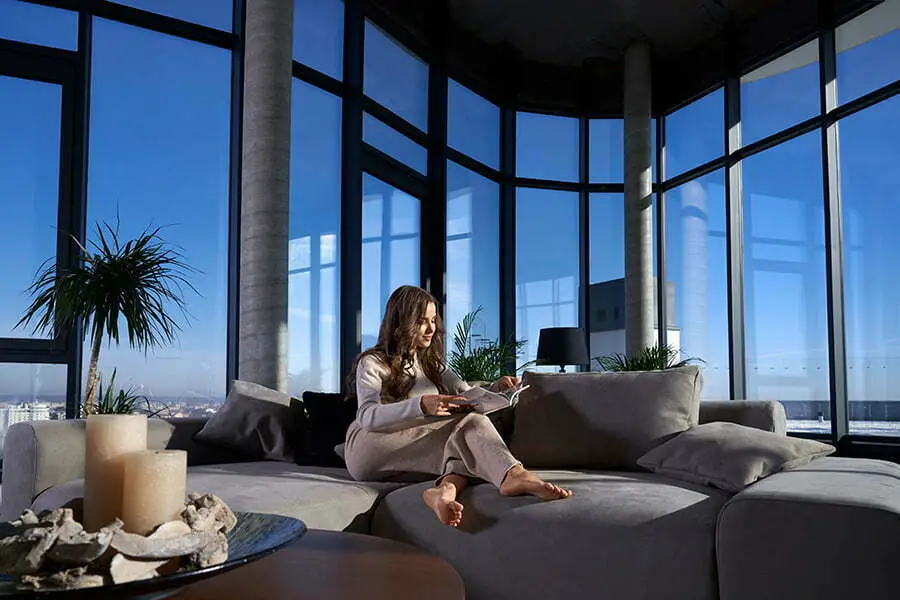
It helps our bodies absorb calcium, which is necessary for strong bones and teeth. Vitamin D also plays a crucial role in supporting the immune system, reducing inflammation, and regulating mood.
While sunlight exposure is one of the best ways to get vitamin D naturally, it’s important to note that not all UV rays are created equal when it comes to vitamin D production. The type of UV radiation that triggers vitamin D synthesis in the skin (UVB) does not penetrate glass windows effectively.
This means that even if you’re sitting by a window on a sunny day, your body may not be able to produce enough vitamin D from sunlight exposure alone. In fact, research suggests that people who spend most of their time indoors or have limited sun exposure may be at risk for low levels of this vital nutrient.
How Much Vitamin D Can You Absorb Through Glass?
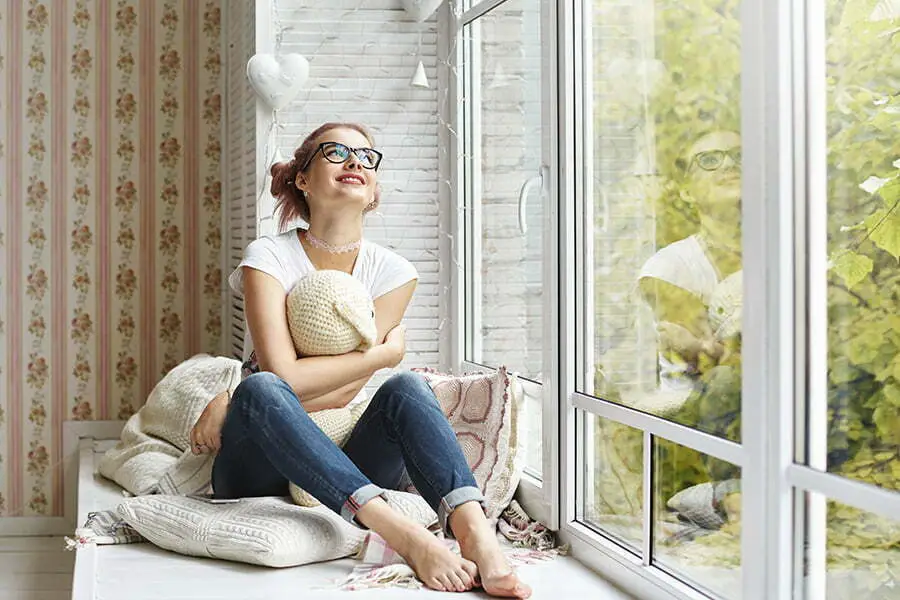
However, if you’re unable to get outside and soak up some rays, you may be wondering if sitting by a window can provide any benefits. The answer is yes and no.
While windows do allow some UVB radiation (the type of UV that triggers vitamin D synthesis) to pass through, most glass filters out the majority of these rays. This means that even on a sunny day with your skin exposed near a window pane or windshield while driving in your car won’t produce enough vitamin D for optimal health.
According to research studies conducted by Harvard Health Publishing and other medical institutions worldwide have shown that only about 50% of UVB radiation penetrates standard glass windows at home or workspaces; this percentage drops significantly when using tinted or coated glasses commonly found in cars.
Therefore it’s essential not solely rely on indoor light sources for Vitamin-D intake as they are insufficient compared with outdoor exposure during peak hours between 10 am-2 pm daily when sun intensity is highest.
Window Films for UV Protection
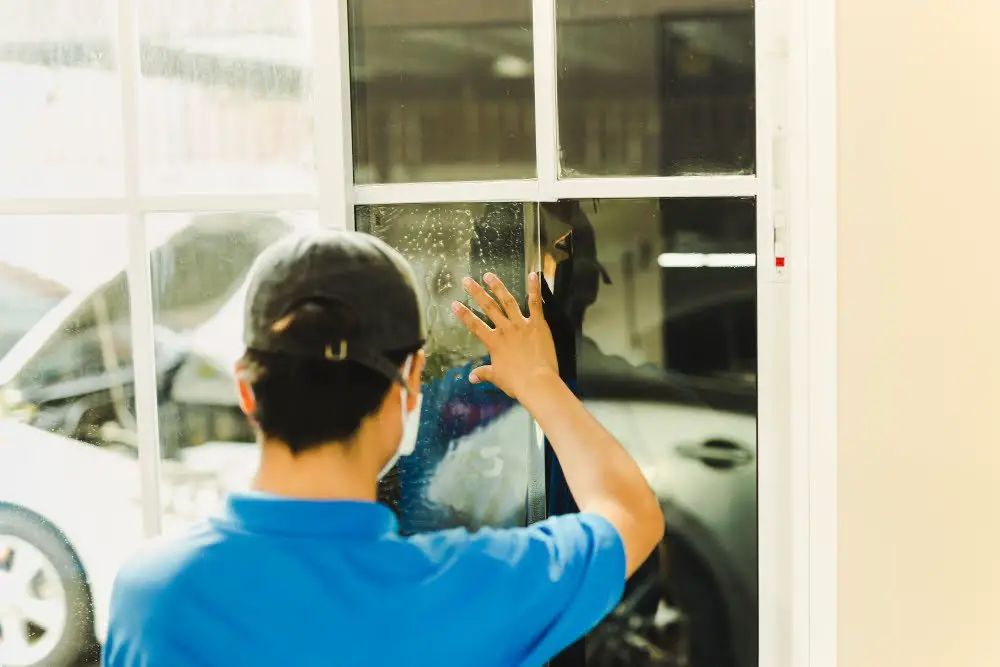
These films work by blocking out a significant portion of the sun’s radiation, including both UVA and UVB rays. They can be applied to any type of window, whether it’s in your home or car.
There are several types of window films available on the market today that offer varying degrees of protection against UV radiation. Some provide up to 99% blockage, while others may only filter out a small percentage.
One thing to keep in mind when considering window film is that it can affect the appearance and clarity of your windows. While some options allow for clear visibility with minimal distortion, others may create a hazy or reflective effect on the glass.
Window Film and UV Blockage
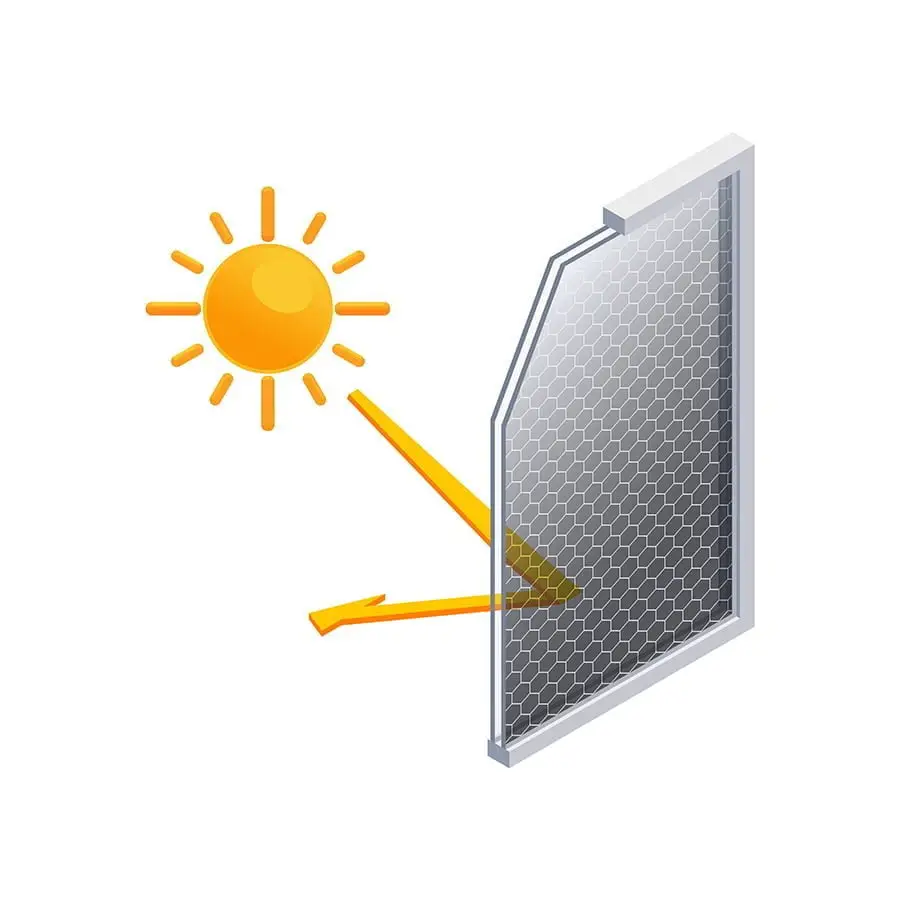
These films are made of polyester and can be applied to the interior surface of windows, providing an extra layer of protection against harmful radiation. The film works by reflecting or absorbing the UV rays before they enter your space.
There are different types of window films available in the market, each with varying degrees of UV blockage. Some offer up to 99% protection against both UVA and UVB rays while others provide less coverage.
It’s important to note that not all window films will completely block out all forms of radiation, so it’s essential to choose one that provides adequate protection based on your needs and location.
In addition to protecting you from skin damage caused by prolonged exposure to sunlight indoors, installing a high-quality window film can also help reduce energy costs by preventing heat gain during hot summer months. This means you’ll save money on air conditioning bills while enjoying cooler indoor temperatures without sacrificing natural light.
Health Risks of Tanning Indoors
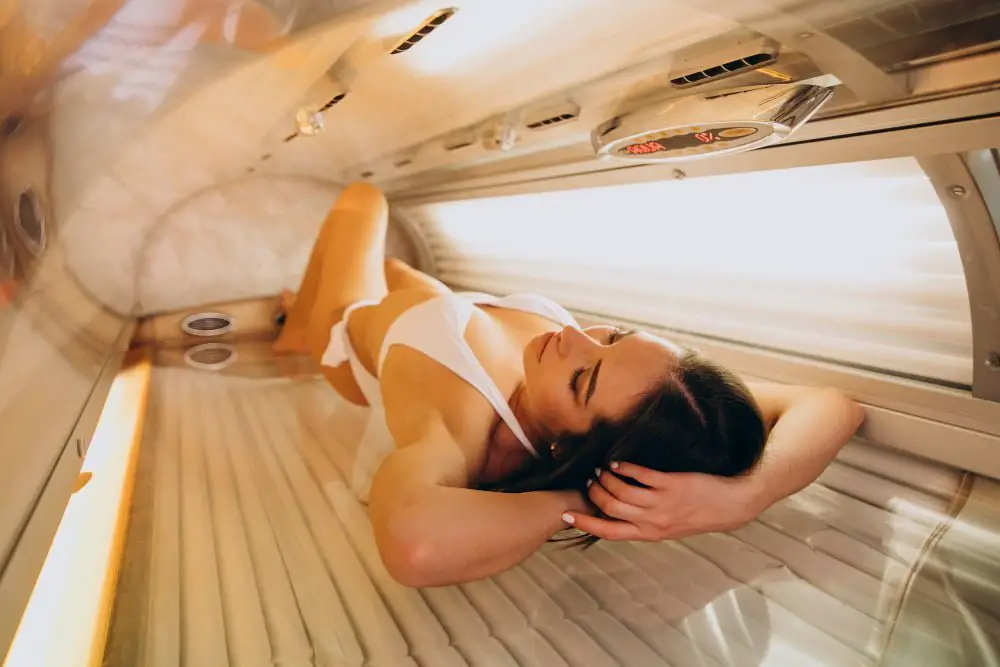
However, it’s important to note that indoor tanning comes with its own set of health risks. According to the American Academy of Dermatology (AAD), indoor tanning increases your risk of developing skin cancer by 59 percent.
The UV radiation emitted by indoor tanning beds is much stronger than natural sunlight, which means that you’re exposing yourself to more harmful rays in a shorter amount of time. This can lead not only to an increased risk for skin cancer but also premature aging and other skin damage such as sunspots or wrinkles.
Frequent exposure can weaken your immune system making you more susceptible not just from getting sick easily but also from developing serious illnesses like melanoma – one type of deadly form of skin cancer.
It’s essential always practice safe sun exposure habits whether indoors or outdoors.
Should I Wear SPF When Sitting When Working From Home?
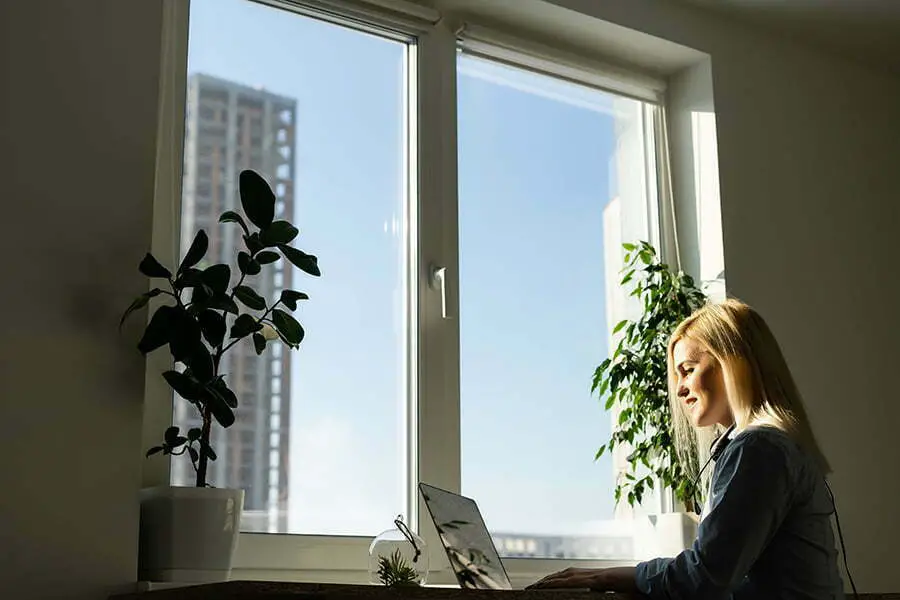
While it may seem unnecessary to wear sunscreen indoors, especially if you’re not directly exposed to sunlight, UV rays can still penetrate through glass windows and cause damage. Therefore, wearing SPF when sitting near a window is highly recommended.
According to dermatologists, even low levels of exposure over time can lead to premature aging and an increased risk for skin cancer. So whether you’re working or just relaxing by the window at home during peak sun hours (10 am – 4 pm), applying sunscreen with at least SPF 30 is crucial.
It’s also worth noting that some types of glass windows provide more protection against UV radiation than others. For example, tinted or coated windows are better at blocking out harmful rays compared with regular clear glass panes.
Sunscreen Use Indoors
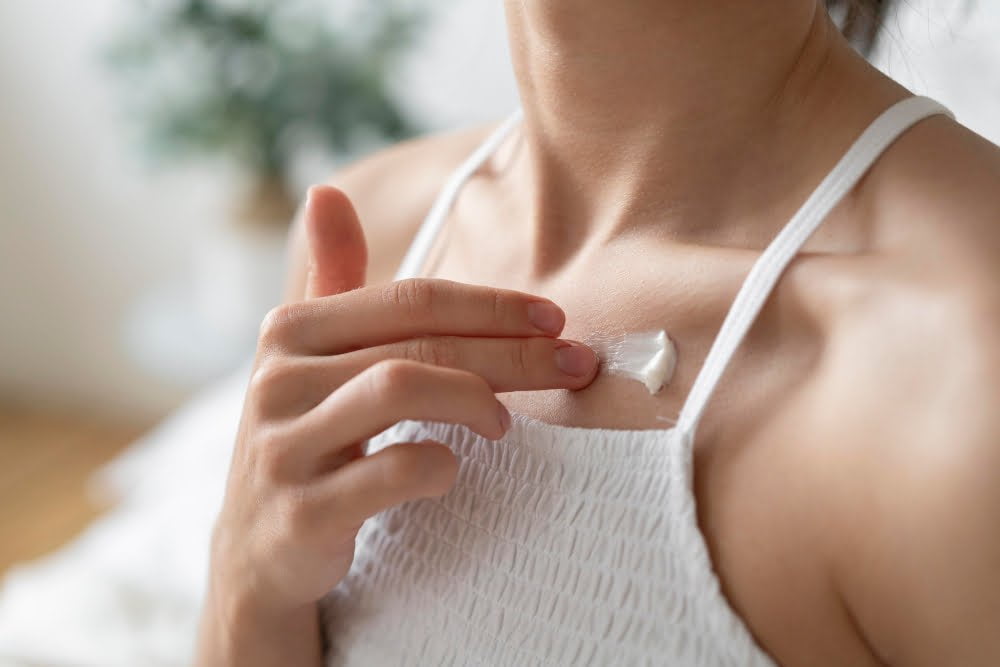
This means that even if you’re not directly exposed to the sun’s rays, you could still be at risk for skin damage and premature aging.
To protect your skin from harmful UV radiation while indoors, consider wearing a broad-spectrum sunscreen with an SPF of 30 or higher. Apply the sunscreen generously on all exposed areas of your body before sitting near windows or under artificial lighting sources like fluorescent bulbs.
It’s also worth noting that some types of indoor lighting emit low levels of UVA radiation which can contribute to skin damage over time. So even if you’re not near a window but spend long hours under artificial light sources in an office setting or at home, applying sunscreen is recommended.
Skin Cancer Prevention
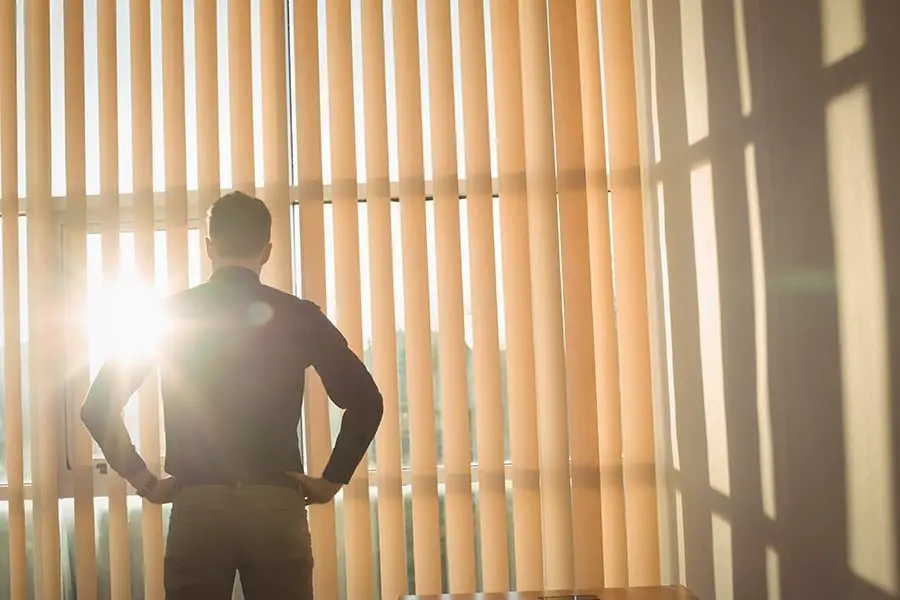
While tanning through windows may seem like a harmless way to get some sun, it can actually increase your risk for developing skin cancer. To prevent this from happening, it’s important to take steps towards protecting your skin.
One effective way to protect yourself from harmful UV rays is by wearing sunscreen with an SPF of at least 30 every day – even when you’re indoors. This will help shield your skin from any potential damage caused by sunlight filtering through windows.
Another preventative measure you can take is investing in window films or treatments that block out harmful UV rays while still allowing natural light into your home or office space. These films are designed specifically for this purpose and have been shown to reduce up to 99% of incoming ultraviolet radiation.
Try limiting the amount of time spent sitting next to a window during peak hours when the sun’s rays are strongest (usually between 10 am and 4 pm). If possible, move away from direct sunlight altogether and opt for indoor activities instead.
Tips for Safe Sun Exposure
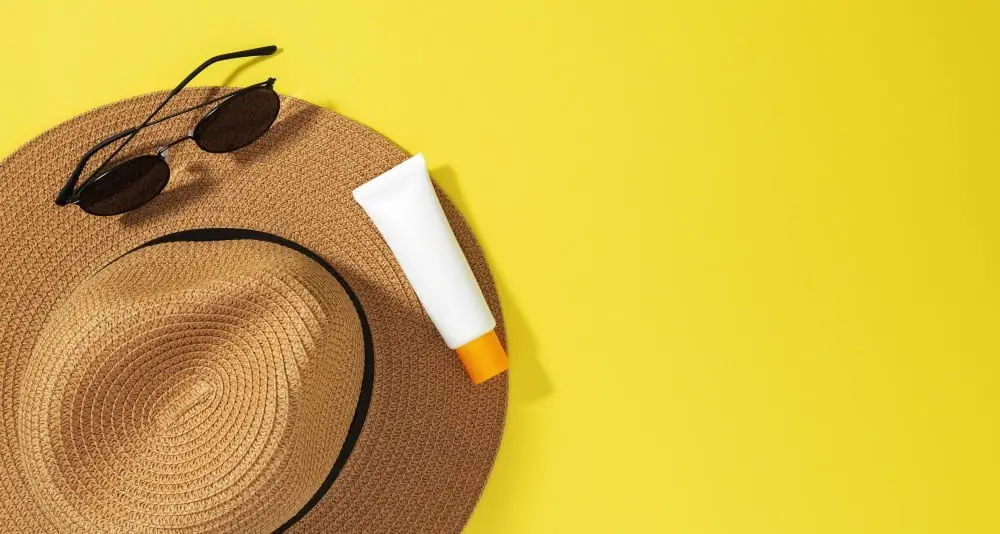
To ensure safe sun exposure, here are some tips:.
1. Wear sunscreen: Even if you’re sitting indoors by the window, applying sunscreen with at least SPF 30 is crucial for protecting your skin from harmful UV rays.
2. Limit exposure time: It’s best not to spend too much time in direct sunlight or near windows during peak hours when the sun is strongest (between 10 am and 4 pm).
3. Seek shade: If possible, sit away from windows or use curtains/blinds that block out most of the sunlight.
4. Cover up: Wearing protective clothing such as long-sleeved shirts and hats can also help shield your skin from damaging UV radiation.
5. Use caution while driving: Car windows do not provide adequate protection against UVA radiation which penetrates deeper into our skins than other types of ultraviolet light; therefore wearing sunglasses with UVA/UVB protection while driving is recommended.
Alternative Methods for Tanning
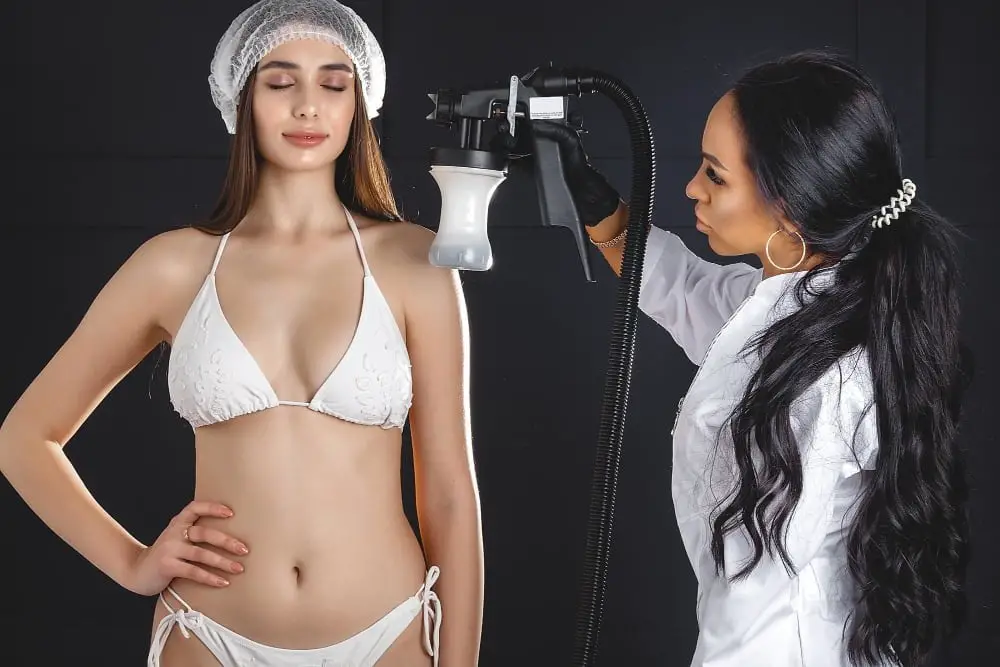
One popular method is using self-tanners or spray tans. These products contain dihydroxyacetone (DHA), which reacts with the amino acids in your skin to produce a temporary tan that lasts several days.
Another option is using a sunless tanning lotion, which can be applied at home and provides a natural-looking tan without exposure to UV rays. These lotions come in various shades and formulas, so it’s essential to choose one that suits your skin type.
Lastly, consider investing in a high-quality airbrush system or visiting a professional salon for an airbrushed tan application. This technique involves spraying fine mist onto the body evenly and produces long-lasting results similar to those achieved by traditional outdoor sunbathing.
The Bottom Line
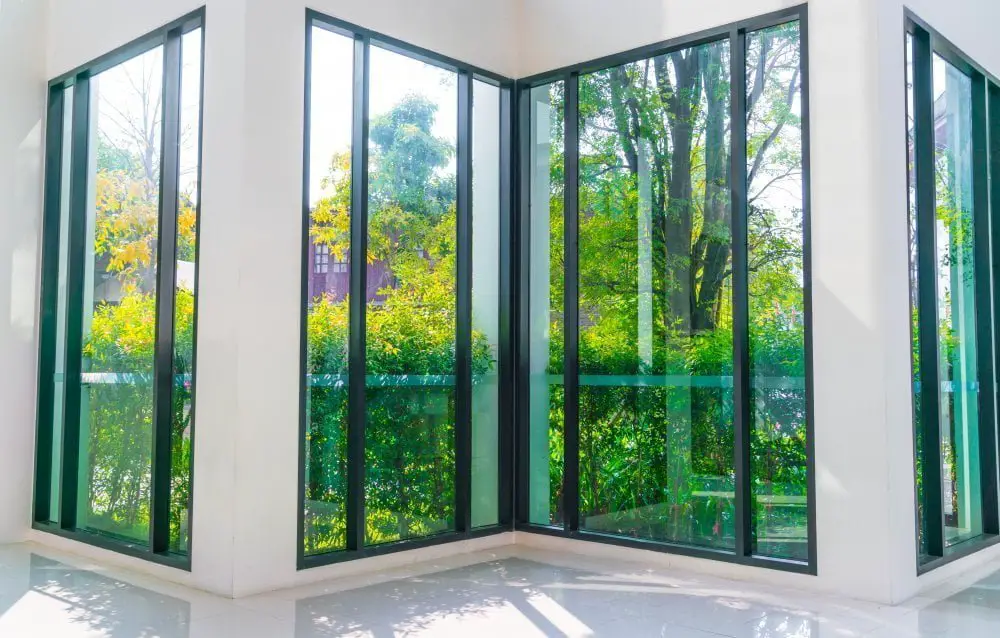
This means that your chances of getting a noticeable tan are slim, especially if you’re sitting indoors or in a car with tinted windows.
However, just because you may not be able to see the effects of tanning through glass doesn’t mean there aren’t any risks involved. Prolonged exposure to UV radiation can still damage your skin and increase your risk for skin cancer over time.
So if you want to protect yourself from harmful rays while enjoying some natural light indoors or on-the-go, consider investing in window films or sunscreens specifically designed for indoor use. And remember: safe sun practices like wearing protective clothing and avoiding peak hours when the sun’s rays are strongest should always be top-of-mind when it comes to protecting yourself against skin damage and disease.
FAQ
Do you tan better through a window?
Tanning through a window is less effective due to windows filtering out some rays, making spray tans a more practical option for achieving a desired glow.
Can the sun tan me through a window?
Yes, the sun can tan you through a window as more than 50 percent of UVA rays, which contribute to skin aging and cancer, can penetrate glass.
Can you still get vitamin D through a window?
No, you cannot get vitamin D through a window, as commercial and automobile glass blocks UVB rays which are necessary for vitamin D production.
Why can’t you suntan behind a window?
You can’t suntan behind a window because standard glass, made with lime and soda, blocks UV rays which are necessary for skin to produce melanin and achieve a tan.
What type of glass influences tanning ability through a window?
“Ultraviolet (UV) radiation transmittance is significantly reduced in laminated glass, therefore, this type of glass influences tanning ability through a window.”
Are there any potential risks associated with trying to tan through a window?
Yes, tanning through a window poses potential risks as it allows UVA radiation to penetrate the glass, increasing the risk of skin aging and damage.
How does window tinting affect the tanning process when exposed to sunlight?
Window tinting reduces the tanning effect by blocking a significant amount of UV radiation.
Recap
